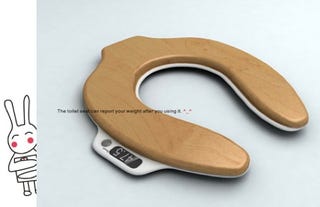dhays
Guru
- Joined
- May 26, 2015
- Messages
- 9,045
- Location
- United States
- Vessel Name
- Kinship
- Vessel Make
- North Pacific 43
I have a tank level monitor but it is seriously lacking. I will get and install a different type of system at some point, Peggie has mentioned a good one. In the mean time, I am still looking at a way to tell how full or empty the holding tank is so there aren’t any unpleasant surprises. I finally came up with a solution I hope will work. Math.
My tank is 50 gallon or 189 liters. I figure that the average adult produces 3 liters of waste per day. I have a Tecma Silence head. It has two buttons. The first is a pre-flush which puts .5 liters of water in the bowl. The second is the flush button and the head uses .75 liters to flush. The idea is that for solid waste you use the pre-flush button before, and the flush button afterwards.
So my idea is this, simply count the number of times the flush button is pushed. I don’t care which button is pushed, just count each button as it is pushed. So I figure that I will consider 200 pushes until I need to empty the holding tank. Given the enormous size of my prostate and the tiny size of my wife’s bladder, we should be hitting a button 200 times in a week. 200 flushes would be roughly 145 liters (remember the pre-flush is only .5 liters). 7 days would be 42 liters of waste between the two of us. So that would make 187 liters in the holding tank.
So my plan is simply to use a tally counter with the instruction to anyone on the boat to simply click it for each button push. If the counter says 175, then I will figure that the tank is 3/4 full and I can plan accordingly.
Time will tell if this works.
My tank is 50 gallon or 189 liters. I figure that the average adult produces 3 liters of waste per day. I have a Tecma Silence head. It has two buttons. The first is a pre-flush which puts .5 liters of water in the bowl. The second is the flush button and the head uses .75 liters to flush. The idea is that for solid waste you use the pre-flush button before, and the flush button afterwards.
So my idea is this, simply count the number of times the flush button is pushed. I don’t care which button is pushed, just count each button as it is pushed. So I figure that I will consider 200 pushes until I need to empty the holding tank. Given the enormous size of my prostate and the tiny size of my wife’s bladder, we should be hitting a button 200 times in a week. 200 flushes would be roughly 145 liters (remember the pre-flush is only .5 liters). 7 days would be 42 liters of waste between the two of us. So that would make 187 liters in the holding tank.
So my plan is simply to use a tally counter with the instruction to anyone on the boat to simply click it for each button push. If the counter says 175, then I will figure that the tank is 3/4 full and I can plan accordingly.
Time will tell if this works.




